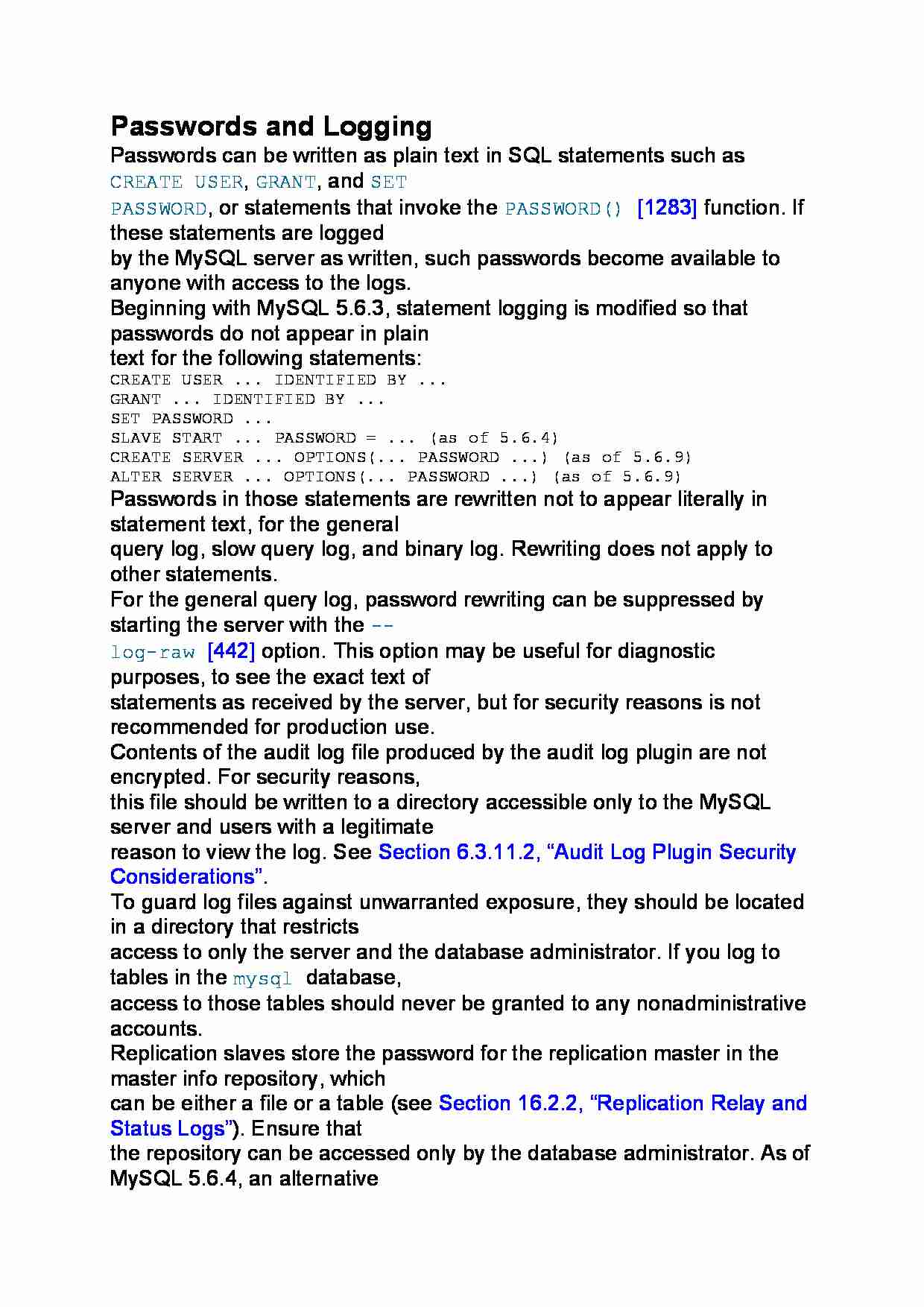To tylko jedna z 2 stron tej notatki. Zaloguj się aby zobaczyć ten dokument.
Zobacz
całą notatkę


Passwords and Logging
Passwords can be written as plain text in SQL statements such as CREATE USER, GRANT, and SET
PASSWORD, or statements that invoke the PASSWORD() [1283] function. If these statements are logged
by the MySQL server as written, such passwords become available to anyone with access to the logs.
Beginning with MySQL 5.6.3, statement logging is modified so that passwords do not appear in plain
text for the following statements:
CREATE USER ... IDENTIFIED BY ...
GRANT ... IDENTIFIED BY ...
SET PASSWORD ...
SLAVE START ... PASSWORD = ... (as of 5.6.4)
CREATE SERVER ... OPTIONS(... PASSWORD ...) (as of 5.6.9)
ALTER SERVER ... OPTIONS(... PASSWORD ...) (as of 5.6.9)
Passwords in those statements are rewritten not to appear literally in statement text, for the general
query log, slow query log, and binary log. Rewriting does not apply to other statements.
For the general query log, password rewriting can be suppressed by starting the server with the --
log-raw [442] option. This option may be useful for diagnostic purposes, to see the exact text of
statements as received by the server, but for security reasons is not recommended for production use.
Contents of the audit log file produced by the audit log plugin are not encrypted. For security reasons,
this file should be written to a directory accessible only to the MySQL server and users with a legitimate
reason to view the log. See Section 6.3.11.2, “Audit Log Plugin Security Considerations”.
To guard log files against unwarranted exposure, they should be located in a directory that restricts
access to only the server and the database administrator. If you log to tables in the mysql database,
access to those tables should never be granted to any nonadministrative accounts.
Replication slaves store the password for the replication master in the master info repository, which
can be either a file or a table (see Section 16.2.2, “Replication Relay and Status Logs”). Ensure that
the repository can be accessed only by the database administrator. As of MySQL 5.6.4, an alternative
to storing the password in a file is to use the START SLAVE statement to specify credentials for
connecting to the master.
... zobacz całą notatkę




Komentarze użytkowników (0)